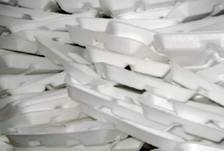Waste plastics harmful to the environment
By sylvapan
@intcopan (3)
Dallas, Texas
July 16, 2014 3:27am CST
Since the advent of plastics 20th century, with a light weight, high strength, corrosion resistance, good chemical stability, easy processing and beautiful and practical, which is widely used in various fields worldwide. Due to its difficult natural degradation, effective governance of waste plastics have become prominent environmental problems. Although less conventional landfill technology investment, simple operation, but it will occupy a lot of land, soil permeability, hinder breathing and nutrients absorbed by plants. Although incineration technology enables reduction requirements while recovering part of the energy, but this process is easy to release a large number of light hydrocarbons, nitrides, sulfides and highly toxic dioxin, a direct threat to human health and the environment, and incineration HC1 gases generated can cause acid rain intensified. Achieve waste plastics recycling not only can effectively prevent pollution of the environment, but also make full use of limited resources to create economic benefits, with a significant environmental and economic benefits.
Waste plastics damage to the environment, mainly refers to the discarded plastic waste scattered in farmland, urban, scenic areas, water conservancy facilities, and both sides of the road, on the urban environment, human health, soil arable land, oil and other aspects of resource consumption generated negative impact.
1 pair of toxic organisms
PVC (Polyvinyl Chloride, pvc) in, the use of the additive amount of vinegar phthalate reaches 35% - 50%, with the passage of time, PAEs plastic can migrate into the environment. Studies have shown that, PAEs with general toxicity and specific toxicity (such as teratogenic, mutagenic or carcinogenic activity), in humans and animals play a role in the class of female hormones, endocrine disruptors can cause human reproductive dysfunction, male sperm count cut back. And its hydrolysis and photolysis rates are very slow, are difficult to degrade organic pollutants in the atmosphere, soil, and water are residues. The world's oceans and rivers to the dumping of plastic waste has caused massive death of marine life every year.
2 pairs of soil and atmospheric environmental hazards
(1) waste plastics are biodegradable polymers, difficult to decompose under natural conditions, mixed in the soil, destruction of the original good physical and chemical properties of soil, fertilizer hinder evenly distributed, soil permeability, is not conducive to plant root growth, crops absorb nutrients and water, resulting in crop production.
(2) Mixed waste of human life can not effectively manage waste plastics, sanitary landfill and composting unable to break down. Plastic density, bulky, quickly piling up, reduce landfill waste disposal capability; Moreover, after the landfill site due to the soft ground, garbage harmful substances like bacteria and virus easily penetrate the ground, groundwater pollution endangering the surrounding environment.
3 wasting a lot of non-renewable resources
For a lot of waste plastic generated each year, if not taken an active recycling measures will increasingly scarce non-renewable resources of coal, oil and gas, etc., causing a huge waste.
4 visual pollution
Waste plastics scattered throughout the city, severely damaged the overall beauty of the city, the city and unsightly.

COMPACT EPS/Polystyrene/Styrofoam Recycling with GREENMAX Compactor What’s EPS? EPS(Expanded polystyrene) looks like a rigid white foam used packaging or insulation, such as Packaging, fish boxes, and Electrical packaging, EPS trays. What happens to EPS if
No responses





